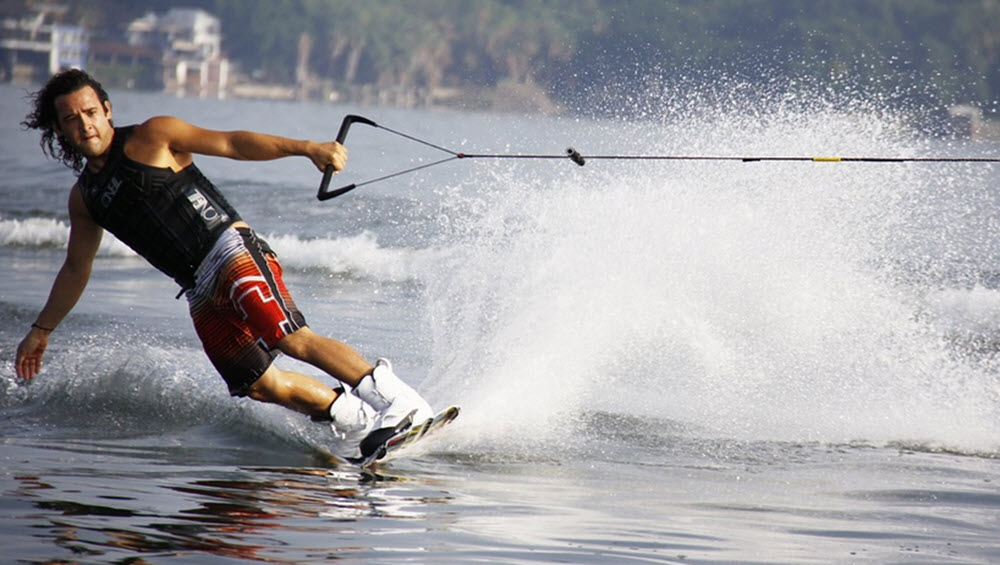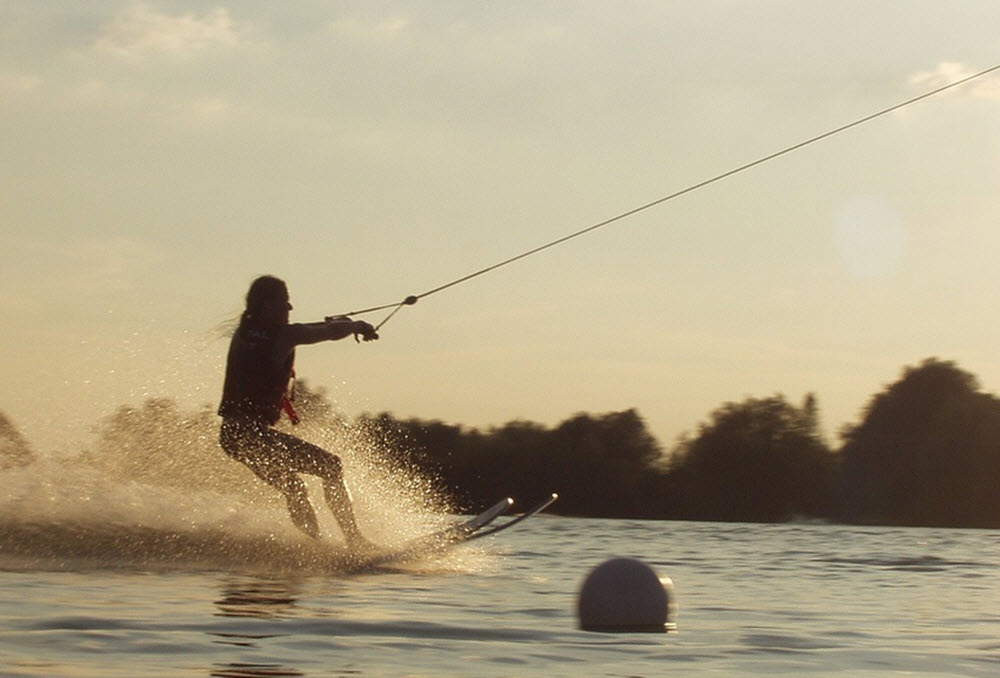Contents
Water skiing is one of many surface water sports where an individual is pulled behind a boat over a body of water, skimming the surface. In water skiing, the person is wearing one or two skis.

Note: After water skiing became popular, electric cable ski installations were created, which makes it possible to engage in water skiing without a boat. This is sometimes referred to as cable skiing.
Many different types of water can be suitable for water-skiing, as long as there is enough space (vertically and horizontally) and the surface is calm enough. Water-skiing is for instance carried out at sea, on lakes and in rivers. Generally speaking, water-skiing in very shallow water is inadvisable.
The skis
How many skis?
Most water-skiing is carried out using two skis (one on each foot, also known as combo skiing), but some skiers prefer to use only one ski. When only one ski is used, the dominant foot is typically placed in front of the non-dominant foot.
How large?
Generally speaking, the ideal ski size depends on your weight. The heavier you are, the larger your perfect water-skis will be.
However, the ideal length will also depend on which kind of water-skiing you want to carry out. Jumping is for instance often done with extra long skis, and trick-skis tend to be wider than standard skis.
Water-skis for children
Special water-skis are available for children, usually around 110 cm – 150 cm (45 in to 60 in).
Sometimes, the the two skis are tied together at the back and the front, which keeps them from separating in the water. (Without such ties, quite a lot of strength can be required to keep the skis together if they start separating in the water.)
Related sports
Examples of activities related to water skiing:
- Wakeboarding
- Kneeboarding
- Sit-down hydrofoil
History
Ralph Wilford Samuelson
In the summer of 1922, the almost 19-year-old Ralph Wilford Samuelson (1903-1977) used a pair of boards as skis and a clothesline as a towrope to go water-skiing after a powerboat driven by his brother Ben on Lake Pepin in Minnesota, USA. This is the first known instance of water-skiing. At the time, Samuelson already had a lot of experience with aquaplaning – an activity where you stand on one board while being pulled by a powerboat.
Samuelson did a lot of experimentation with his water-skiing, and eventually concluded that leaning backwards with the ski tips up was the preferred position. During his early tries, he used barrel staves for skis, before trying out actual snow skis. Eventually, he built his own water-skis from lumber and made leather-strip bindings for them. Also, he exchanged the clothesline rope for a window sash cord.
Samuelson became quite famous and spent 15 years teaching water-skiing and performing at shows throughout the United States.

Other examples of notable persons in the history of water skiing
- Fred Waller in New York State, who developed and marketed the Dolphin Akwa-Skees, water-skis made from kiln-dried mahogany. He received a patent for them in 1925.
- Don Ibsen, who in 1928 developed his own water skis independently of Samuelson and Waller. He founded The Olympic Water Ski Club in Seattle, Washington State. ‘
- Gunnar Ljungström, a young Swedish sailor and engineer who pioneered water skiing in slalom moves from 1929 and onward.
- Jack Andresen who, in 1940, patented the first trick ski. The Andresen ski was extra short and had no fins.
- Dick Pope, Sr, a promoter who helped promote water-skiing outside the United States. He was also famous for his jumps on water-skis. His son Dick Pope, Jr. pioneered bare-foot water skiing.
